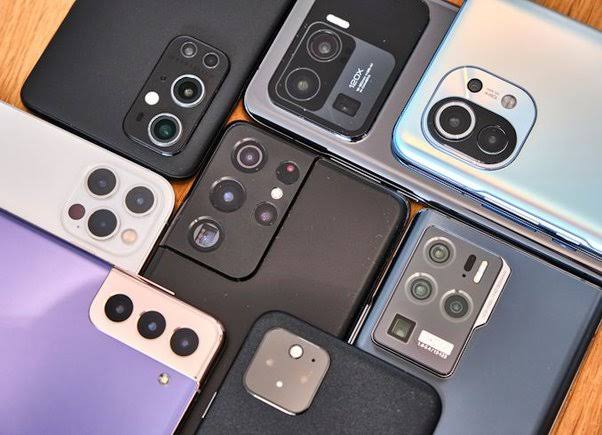The evolution of smartphone cameras has been nothing short of remarkable. What started as convenient feature for capturing quick snapshots has transformed into powerful tool. It's now rivaling traditional cameras in many respects. The rapid pace of advancing technology drives this transformation. The future of smartphone cameras promises even more exciting innovations. This article explores the key advances in technology. We also delve into the innovations shaping future of smartphone cameras.
Megapixel Race and Beyond
For years number of megapixels was a primary measure. It gauged camera's quality. Higher megapixels do contribute to better image resolution. Future of smartphone cameras involves much more. Than just increasing pixel counts. Manufacturers are focusing on enhancing sensor technology. Improving low-light performance. And integrating artificial intelligence to produce superior images.
Sensor Technology
Advancements in sensor technology are crucial for future of smartphone cameras. Larger sensors with improved light sensitivity allow for better image quality. Particularly in low-light conditions. Technologies such as stacked sensors and backside-illuminated sensors are becoming more common. Enabling smartphones to capture more light and detail
Artificial Intelligence and Computational Photography
Artificial intelligence (AI) and computational photography are revolutionizing the way smartphone cameras capture and process images. AI algorithms can analyze and optimize various aspects of a photo, including exposure, color balance, and sharpness, in real-time. Features like scene recognition, portrait mode, and night mode rely heavily on AI to produce stunning images.
Computational photography combines multiple images taken in rapid succession to create a single high-quality image. Techniques such as HDR (High Dynamic Range) and multi-frame noise reduction leverage computational photography to enhance image quality, even in challenging lighting conditions. The integration of AI and computational photography is set to redefine the capabilities of smartphone cameras.
Zoom Capabilities
Zoom technology in smartphone cameras has seen significant improvements. Optical zoom, which relies on the physical movement of lens elements, is being complemented by advanced digital zoom and hybrid zoom techniques. Periscope lenses, which use a prism to extend the optical path without increasing the thickness of the phone, allow for impressive optical zoom capabilities in slim smartphone designs.
Hybrid zoom combines optical and digital zoom to produce clear and detailed images at various focal lengths. AI-powered super-resolution algorithms further enhance digital zoom by reconstructing lost details. The future of smartphone zoom technology will likely see even more sophisticated implementations, providing users with the ability to capture distant subjects with exceptional clarity.
Advanced Image Stabilization
Image stabilization is crucial for capturing sharp photos and smooth videos, especially in low-light conditions or when using zoom. Optical image stabilization (OIS) and electronic image stabilization (EIS) are commonly used in smartphones to counteract camera shake. The future will see more advanced stabilization techniques, such as sensor-shift stabilization, which moves the camera sensor instead of the lens to reduce motion blur.
Gyroscope-based stabilization and AI-driven stabilization algorithms will also play a significant role in improving image and video quality. These advancements will enable users to capture professional-quality photos and videos, even in challenging environments.
Video Capabilities
Smartphone video capabilities have improved dramatically, with features such as 4K recording, high frame rates, and advanced stabilization becoming standard. The future will bring even more enhancements, including 8K video recording, better slow-motion capabilities, and advanced video editing tools.
AI-powered video features, such as real-time scene detection and automatic focus tracking, will make it easier for users to create high-quality videos. Additionally, improved audio recording capabilities and advanced microphone technologies will enhance the overall video production experience on smartphones.
Augmented Reality and 3D Imaging
Augmented reality (AR) and 3D imaging are emerging trends that will significantly impact smartphone cameras. AR applications require accurate depth sensing and object recognition, which can be achieved through advanced camera technologies such as time-of-flight (ToF) sensors and structured light systems.
3D imaging capabilities will enable smartphones to capture and recreate real-world objects and environments in three dimensions. This technology has applications in gaming, virtual tours, and e-commerce, where users can visualize products in their own space before making a purchase. The integration of AR and 3D imaging will open up new possibilities for creative expression and practical applications.
Integration with Other Technologies
The future of smartphone cameras will also involve greater integration with other technologies. For example, the combination of camera capabilities with IoT (Internet of Things) devices can enhance home security systems, allowing users to monitor their homes remotely with high-quality video feeds.
Integration with cloud computing will enable real-time image and video processing, offering features like instant sharing, advanced editing, and AI-powered enhancements. Furthermore, the development of foldable and rollable smartphone displays will provide new opportunities for innovative camera designs and user experiences.
Privacy and Security
As smartphone cameras become more advanced, concerns about privacy and security will also grow. Manufacturers will need to implement robust security measures to protect users' photos and videos from unauthorized access. Features such as secure facial recognition, encrypted storage, and advanced permissions management will be essential to address these concerns.
User education will also play a crucial role in ensuring that individuals understand how to protect their privacy while using advanced camera features. The future will see a balance between technological innovation and safeguarding user privacy.
Conclusion
The future of smartphone cameras is incredibly promising, with advances in sensor technology, AI, computational photography, zoom capabilities, stabilization, video recording, AR, and 3D imaging. These innovations will continue to push the boundaries of what smartphone cameras can achieve, providing users with unparalleled photography and videography experiences.
As technology evolves, the integration of smartphone cameras with other devices and systems will create new opportunities for creativity and practicality. However, it is essential to address privacy and security concerns to ensure that these advancements benefit users without compromising their personal information. The future of smartphone cameras is not just about capturing moments but enhancing the way we perceive and interact with the world around us.
